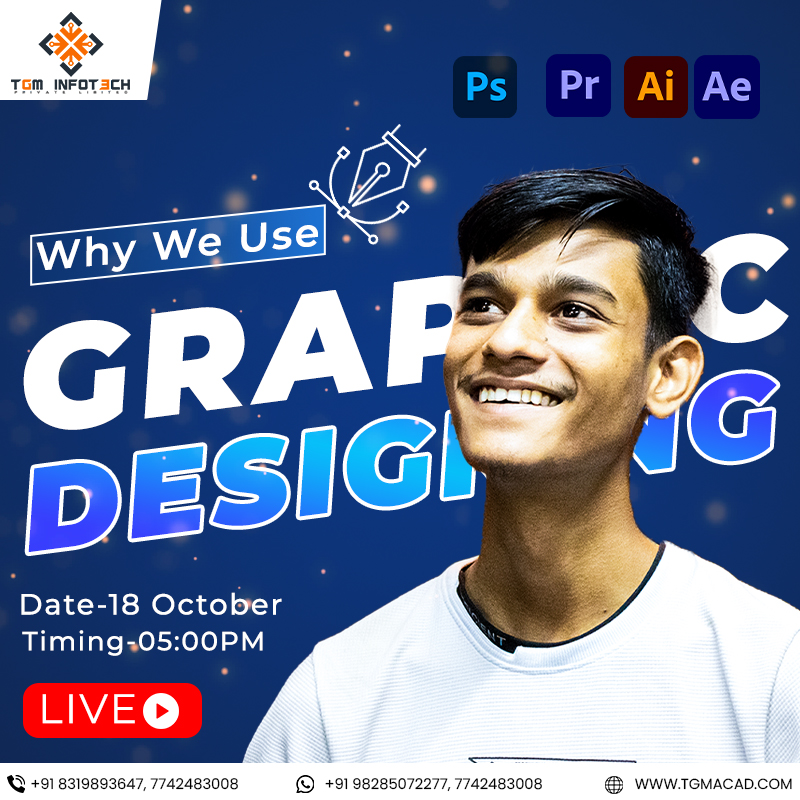How to Use Graphic Design: A Comprehensive Guide
Graphic design is a powerful and versatile tool that permeates every aspect of our lives. From the advertisements we see on the streets to the websites we visit, graphic design is the creative force that visually communicates ideas, messages, and information. It’s an art form that blends creativity and technology to captivate, inform, and inspire. In this comprehensive guide, we will explore the world of graphic design, its principles, and practical applications, providing you with thali. knowledge and tools to harness its potential effective
1. Introduction to Graphic Design
1. Understanding Graphic Design
Graphic design is the art of visual communication. It involves using various elements like images, typography, colors, and layouts to convey a message or tell a story. Whether you’re designing a logo, creating a brochure, or designing a website, graphic design plays a pivotal role in shaping how your audience perceives your content.
2. The Importance of Graphic Design
Effective graphic design can have a profound impact on your brand, product, or message. It helps in:
Brand Identity:
Logos, color schemes, and typography establish a consistent brand identity.
Engagement:
Good design captures and maintains the viewer’s attention.
Clarity:
Design makes complex information easy to understand.
Emotion:
It can evoke emotions and resonate with your audience.
2. Key Elements of Graphic Design

1. Typography
Typography is the art of arranging and styling text. It’s one of the fundamental elements of graphic design. Considerations include font choice, size, spacing, and alignment. Different typefaces convey different moods and messages.
2. Color
Color plays a significant role in design. It can evoke emotions, establish a brand identity, and create visual hierarchy. Understanding color theory and how to use color effectively is essential.
3. Images and Illustrations
Images and illustrations add visual appeal to designs. Whether it’s photographs, icons, or custom illustrations, choosing the right visuals is crucial. Consider image quality, relevance, and placement.
4. Layout
Layout determines the arrangement of elements on a page or screen. It impacts readability and the flow of information. A well-structured layout guides the viewer’s eye and enhances the design’s effectiveness.
3. Principles of Graphic Design
1. Balance
Balance in design refers to the distribution of visual weight. It can be achieved through symmetry or asymmetry. A balanced design is visually pleasing and harmonious.
2. Contrast
Contrast involves the juxtaposition of different elements to create visual interest and emphasize certain aspects of the design. It can be achieved through variations in color, size, and shape.
3. Emphasis
Emphasis is about making certain elements stand out. This could be the main headline, a call-to-action button, or a key image. Effective use of emphasis directs the viewer’s attention.
4. Repetition
Repetition involves using consistent elements throughout a design. It can be repeating colors, fonts, shapes, or patterns. Repetition creates a sense of consistency and reinforces the brand’s identity.
5. Alignment
Alignment refers to how elements are positioned in relation to each other. Proper alignment makes a design organized and easier to read.
4. Tools and Software for Graphic Design

1. Adobe Creative Cloud
Adobe Creative Cloud is a suite of software widely used by graphic designers. It includes tools like Adobe Photoshop, Illustrator, InDesign, and more. These applications are versatile and powerful for various design tasks.
2. Canva
Canva is a user-friendly online design platform that offers pre-made templates and a range of design tools. It’s an excellent choice for beginners and small businesses.
3. Affinity Designer
Affinity Designer is an alternative to Adobe’s software, offering powerful vector-based design tools. It’s a cost-effective option for professional designers.
4. Procreate
Procreate is a digital painting app designed for illustrators and artists. It’s particularly popular for creating digital illustrations and artwork.
5. Sketch
Sketch is a vector-based design tool primarily used for web and app design. It’s known for its simplicity and focus on user interface design.
5. Graphic Design in Different Contexts
1. Print Design
Print design encompasses various materials, such as business cards, brochures, posters, and magazines. It requires attention to detail, color accuracy, and print specifications.
2. Web Design
Web design focuses on creating the visual elements of websites. It involves designing layouts, user interfaces, and ensuring a responsive design that works on different devices.
3. Logo Design
Logos are essential for brand identity. A good logo should be simple, memorable, and reflect the essence of the brand.
4. Social Media Graphics
Graphics for social media include posts, banners, and cover images. They need to be attention-grabbing and consistent with your brand.
5. Packaging Design
Packaging design is crucial for attracting customers in a retail environment. It needs to be both functional and visually appealing.
6. The Creative Process
1. Gathering Information
Every design project starts with gathering information. Understand your client’s goals, target audience, and the message you want to convey.
2. Brainstorming and Sketching
Brainstorming and sketching help you generate ideas. Start with rough sketches to explore different concepts.
3. Creating Digital Mockups
Transfer your sketches into digital mockups using graphic design software. Experiment with typography, colors, and layouts.
4. Feedback and Revisions
Share your design with clients or team members for feedback. Be open to revisions and improvements.
7. Staying Updated and Inspired
1. Continuous Learning
Graphic design is an ever-evolving field. Stay updated with the latest trends, software updates, and design techniques.
2. Inspiration Sources
Find inspiration from various sources like design blogs, social media, design exhibitions, and the works of other designers.
Conclusion
Graphic design is a dynamic and indispensable field that influences the way we perceive and interact with the world. By mastering its principles and tools, you can become a proficient designer capable of creating compelling visuals that engage, inform, and inspire. Whether you’re a professional designer, a business owner, or simply someone interested in the world of design, this comprehensive guide equips you with the knowledge to leverage graphic design effectively in a variety of contexts.

